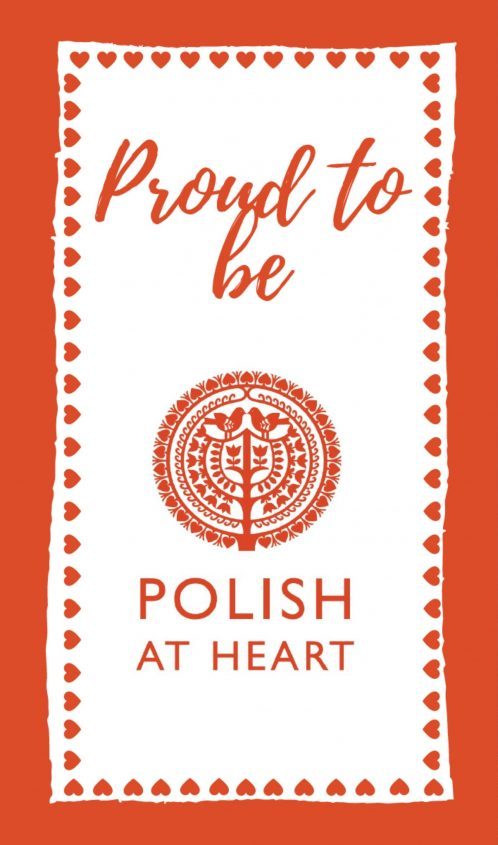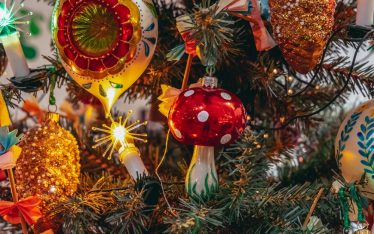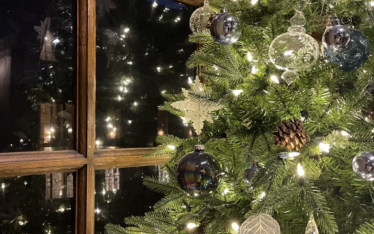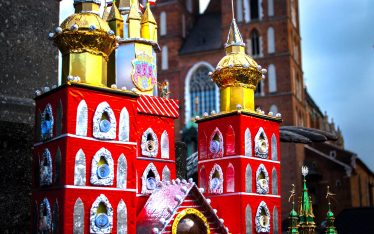As we gather for our Wigila (Christmas Eve) supper, the dishes we prepare are a mixture of traditions from our families. By repeating these customs, we create memories for future generations to pass down. Whilst the dishes of Wigilia are now more homogenous in Poland and beyond, our parents or grandparents will have had eaten very different foods depending on what area they were from, using recipes handed down from grandmothers.
For many centuries an odd number of dishes was though to bring luck, how many, depended on the wealth of the family and it was only more recently that it became twelve from the number of apostles or some say the twelve months of the year. Always, however, the food was without meat as this was a day of fast before Christmas Day. Not fasting from any other food though, by any means!
Red barszcz, mushrooms or fish soup?
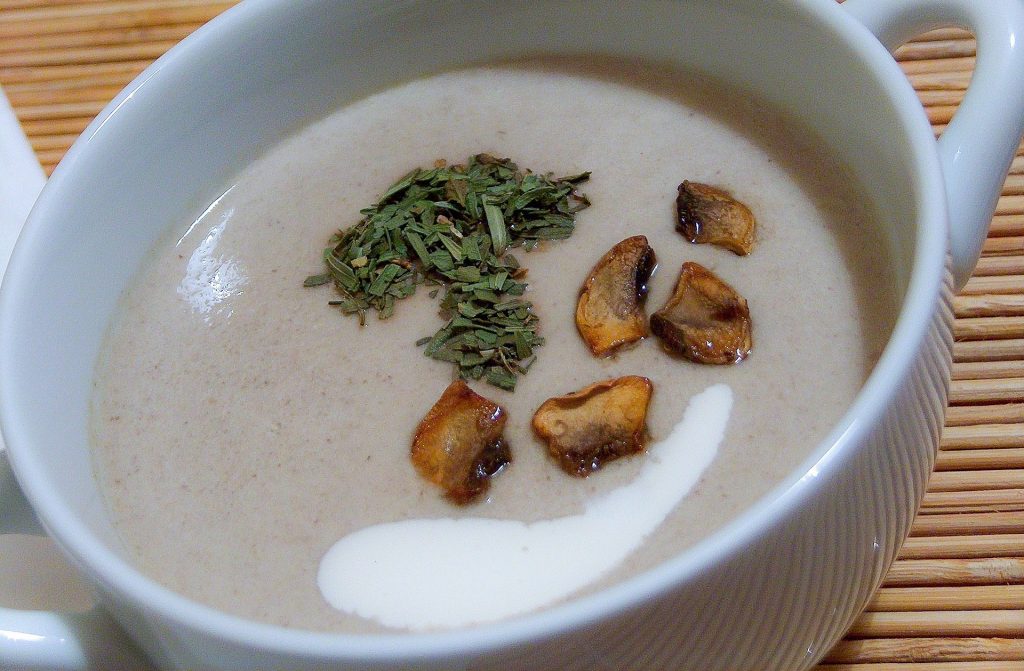
The most commonly served soup is red barszcz (borscht) with uszka (literally little ears, stuffed mushroom dumplings). A white barszcz with cabbage and mushrooms is also served in the Mazowsze (north eastern region). Barszcz cooked on a base of wild fungi is a tradition from the east – now the Podlasie region, where grzyby form the basis of most dishes. Zupa grzybowa (mushroom soup) with łazanki – square home made pasta, is the tradition of Małopolska – Kraków and the south with Galuszki (home made noodles) as the Śląsk version. A unique soup that is now making a comeback in the Podkarpacie (sub Carpathian area of southern Poland) is pamuła – a sweet and salty barszcz made of plums with a garnish of potatoes. Now that is one I’ve not heard of. Or for that matter sIemienotka – a linseed soup, seen on many tables in the Śląsk region of south western Poland.
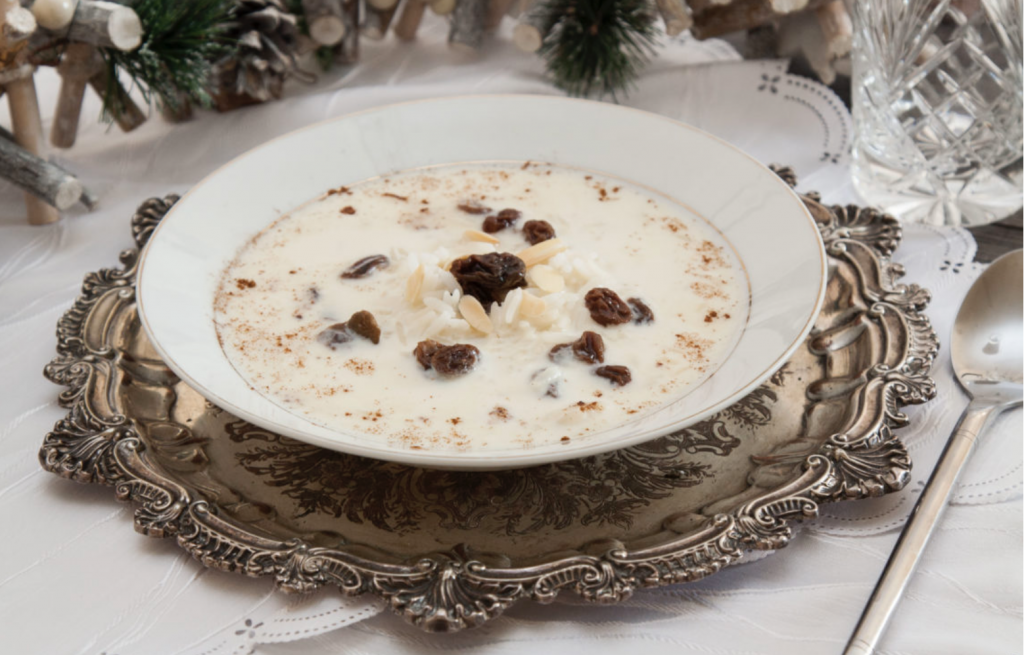
Almond soup for Wigilia Photo: www.kuchennykredens.pl
In the Kresy (borderlands of pre-World War II), almond soup was served, particularly in wealthier households, but also barszcz with fried uszka rather than boiled. Ours are always fried. Of course in the north of Poland by the sea, a fish soup with herring is popular or brządowa zupa made of dried fruits garnished with potatoes or pasta.
Zjeżdżać na Śledziu (to sledge on your front)
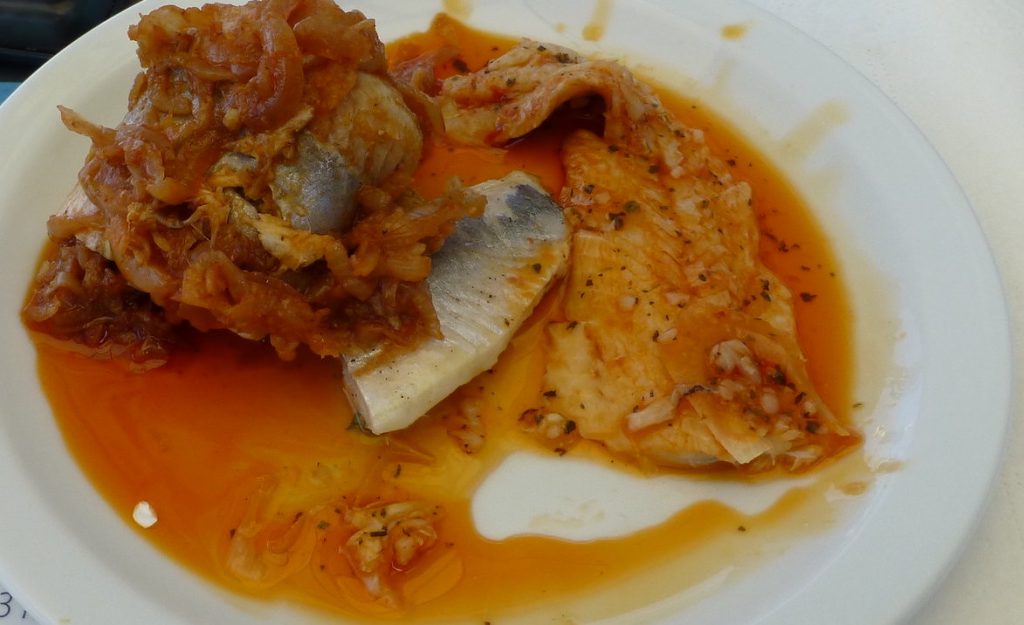
The humble śledz (herring) with its many sayings, has been a popular dish of Poland since the 13th century when it was discovered that salting it kept it fresh for a long time. A symbol of fasting, as you would expect, śledzie are a particular speciality in the coastal Pomorze and Kaszuby regions, served with apples but also in Mazowsze and Małopolska prepared in cream. I also know it from my grandmother in a tomato sauce, but surprisingly it is ever more popular in a sweet form with nuts, raisins and even plums.
The symbol of Christianity
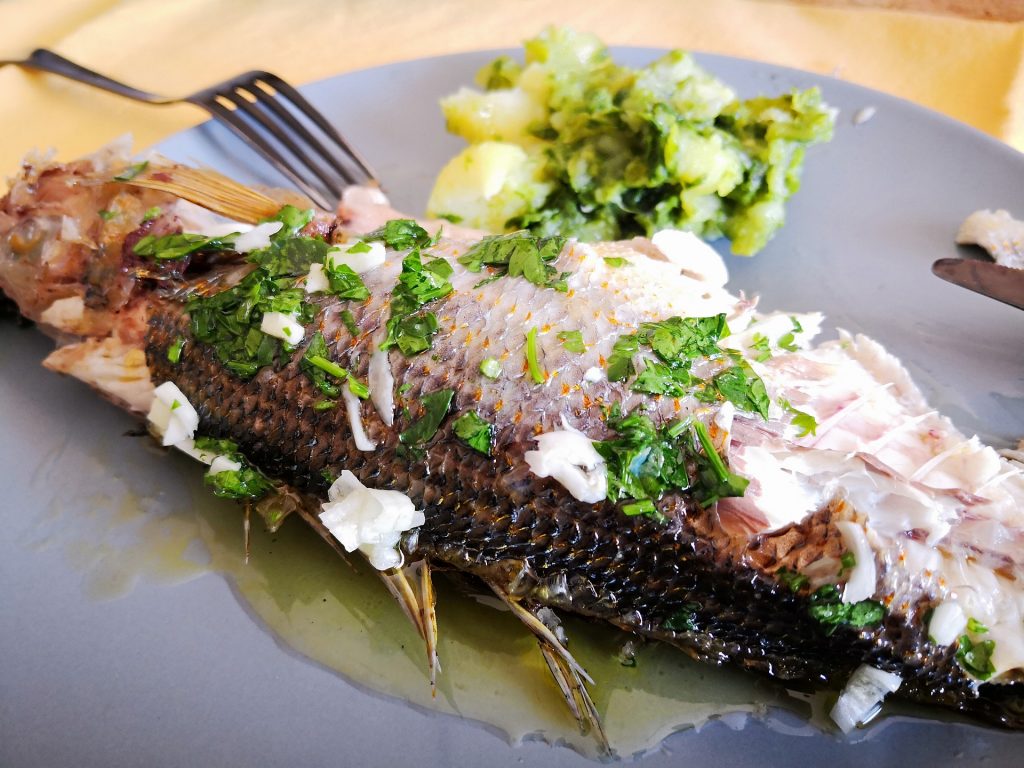
As a Christian symbol, fish features heavily on the table. Whilst Karp (carp) has become the main dish of Wigila in Poland, this is a peculiar tradition of Communist Poland when other fishes were harder to obtain. Pre-war tables focused on a variety of fish dishes, carp being one of them but many recipes were officially discarded as being “too aristocratic”. Sandacz (pike-perch) was served in Mazowsze whilst pstrąg (trout) was also known in Małopolska and particularly the mountains. Karp “Jewish Style” was served in a jelly with onion, almonds, raisins and soft bread in southern Poland and sometimes was smoked.
In my family we have never had carp and instead have haddock in a sweet yeast pastry, presumably a recipe from the Kresy (eastern) region. Fish reigns supreme in the Kaszuby or Pomoranian region with many white fishes served fried with mushrooms, flądra flounder in jelly or even węgorz eel. Stuffed szczupak (pike) was served in the Kresy regions and it is said that Adam Mickiewicz’s favourite Wigilia dish was szczupak po żydowsku – pike prepared in Jewish style.
The Patron Saint of Pierogi
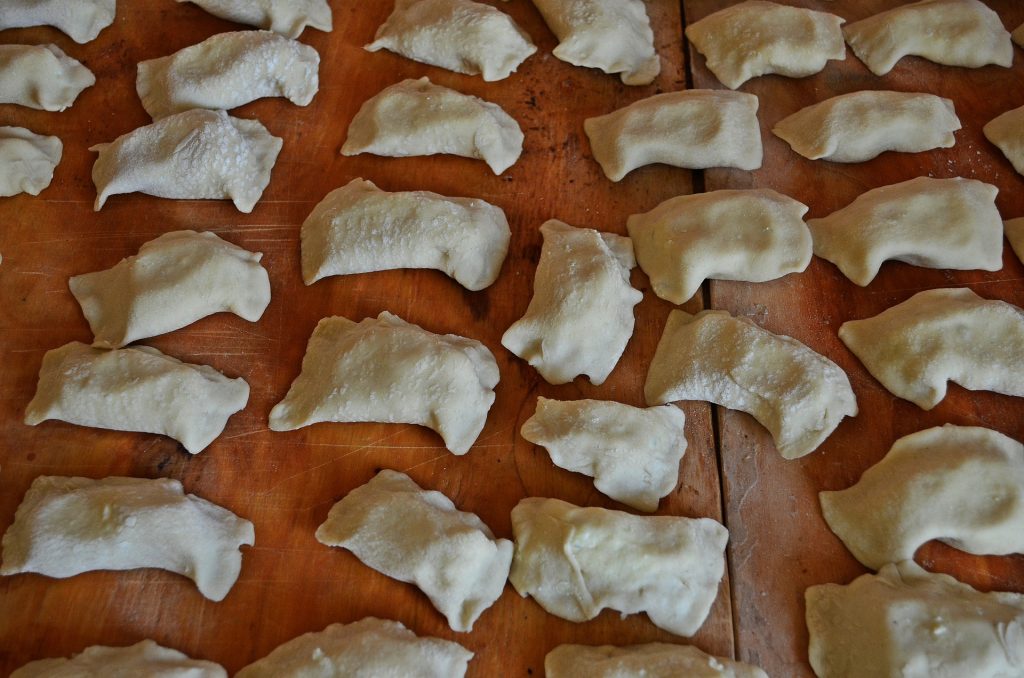
“Święty Jacku z pierogami!” – Saint Jacek with the dumplings’ is a call for help in hopeless circumstances. Brought by Saint Jacek Odroważ (apparently St. Hyacinth in English) from Kiev in the 13th century, legend says he saved Kraków from starvation by making pierogi for the inhabitants and they became a staple in Eastern and Southern Poland for Wigilia with the favourite filling of cabbage and mushrooms. Whilst pierogi are now a popular dish throughout Poland, in Śląsk they continue to eat cabbage and mushrooms without the dough. The Podlasie region (eastern Poland) and Lublin regions of current Poland are still seen as the home of pierogi, based on the different cultures and cuisine of its inhabitants – Belarusian, Ukrainian, Jewish and Tatar but they are also called podlaskie wareniki from the Ukrainian name for pierogi.
Poppy seeds for wealth and prosperity
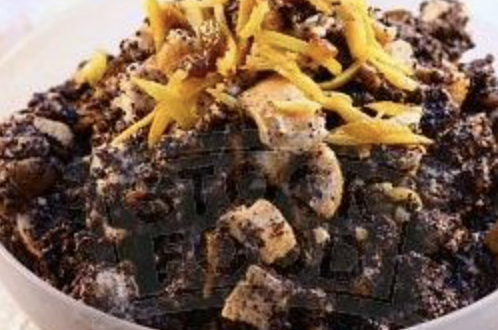
Kutia – a sweet dessert made of wheat grains, poppy seeds and nuts and dried fruits combined with a generous portion of honey – is an eastern dish from the Kresy lands and is known in Russia and Belarus. Poppy seeds arrived in Poland with Armenian traders in the Middle Ages and were seen as a link between life and death. It is said the Mother of Jesus ate kutia when he was born, a symbol of new life. Less popular now, I remember my grandmother eating it but no one else ever wanted to taste it which is a shame. Kluski z makiem are the Wielkopolskie (Western region) tradition eaten for similar reasons, and makówki or makiełki, from Śląsk are yeast rolls layered with sweet poppy seeds and then covered with milk.
Potatoes and flatbreads
In Wielkopolska (Western Poland) region, Wigilia was traditionally very modest and a true fast before Christmas Day so jacket potatoes and śledzie would be served. Rwaki – a type of kopytki (potato dumplings) with cabbage and mushrooms come from Mazowsze. Has anyone heard of moskole – flatbreads made of potato dough, served with mushrooms, from Małopolska?
Gołąbki or cabbage and mushrooms
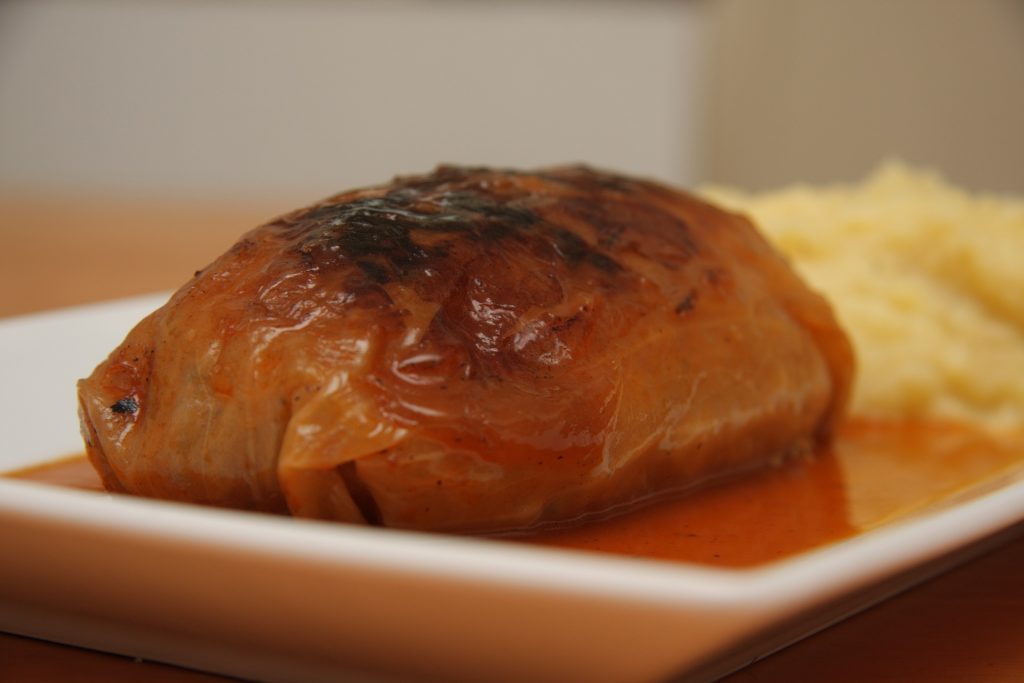
Śląsk households eat gołąbki (cabbage rolls) made with pearl barley and mushrooms whilst others have cabbage and mushrooms in a bigos like combination but without the meat (although I am sure some add meat! In Śląsk panczkraut is often eaten – a dish of cabbage, garlic and potatoes.
Kompot
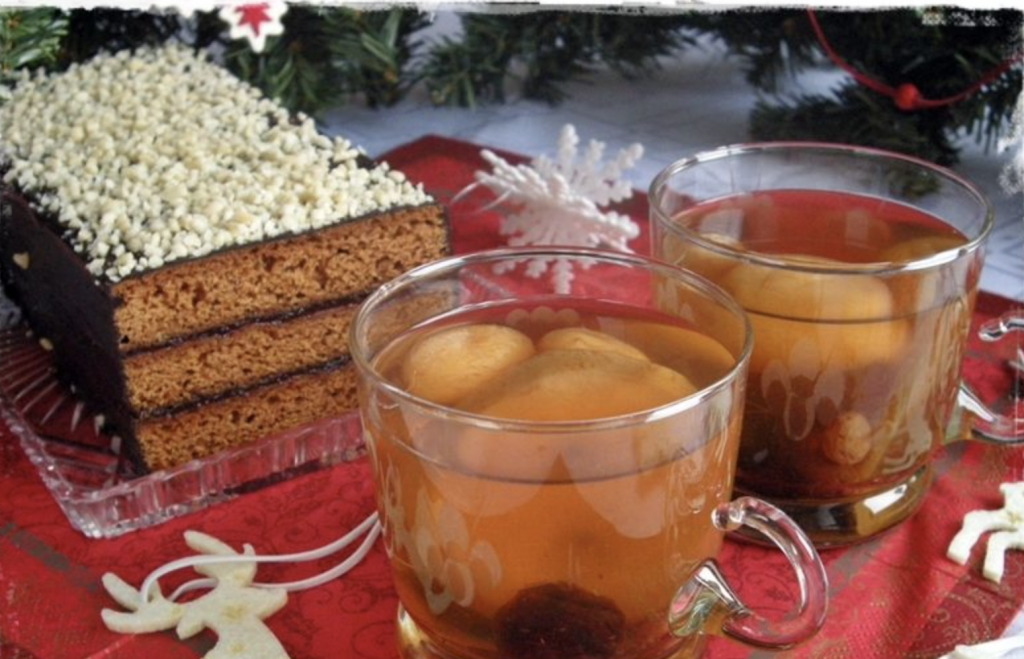
Compote from dried fruit Photo: www.gotujmy.pl
A traditional compote of dried fruits is well known and cleanses the palate after so much heavy food, but in the Podlasie region it was made of forest raspberries abundantly sweetened with honey. We make a very refreshing cranberry kisiel, a home-made jelly known in Mazowsze but also in pre-war Wilno.
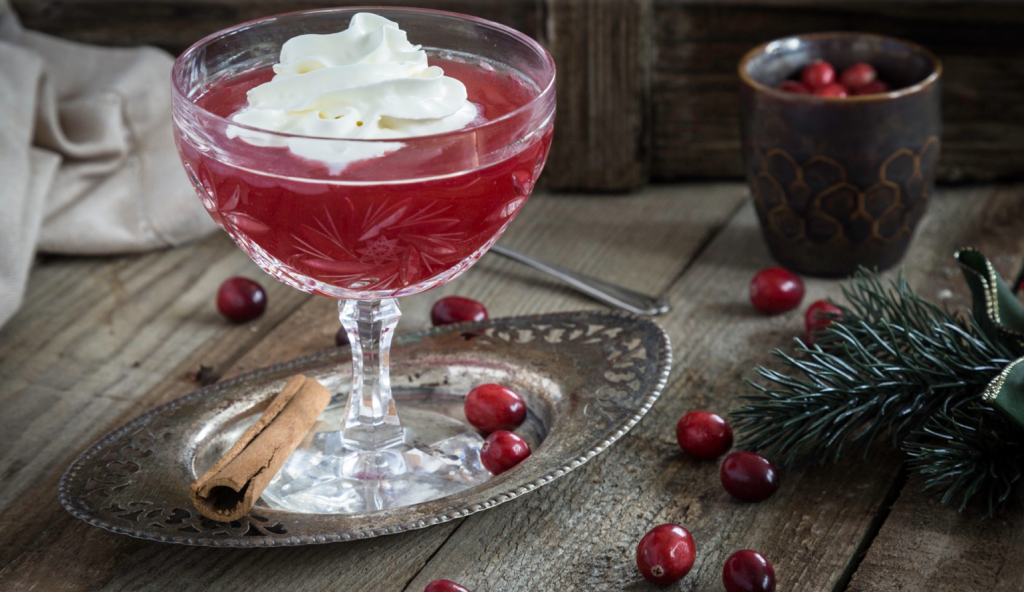
Cranberry kisiel Photo www.kuchennykredens.pl
Makownik, piernik and other delightful cakes and desserts
Makownik – strudel with poppy seeds is very popular in the Lublin region of south-eastern Poland. In Wielopolska, in keeping with a modest fast, they ate a bread pudding with poppy seeds and linseed oil. Śląsk has mocka – a gingerbread soaked with plums, apricots, pears, figs, dates. nuts and dark beer. Kołocz – a cake with a cheese or poppy seed layer, finished with grated bits is well known in Śląsk. In Pomorze, sękacze are well known, but they are also a Lithuanian pyramid yeast cake. Racuchy (yeast pastries) came from eastern Poland especially the Kresy lands and Piernik (gingerbread) comes from the word “pierne” to describe the pepper and spices of ginger, cinnamon and cloves added to it. The oldest recipe in Poland is from 1725, found in a medical book rather than a cookery book as it was used as a remedy for indigestion and colds.
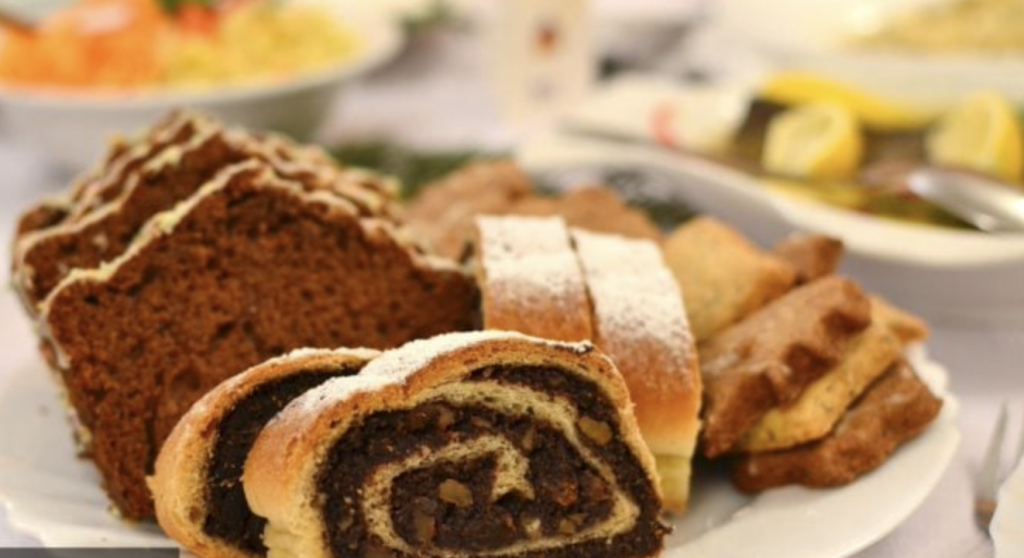
Photo: www.tenpoznan.pl
Above all, Wigilia dishes had to come from all the fruits of the land. Have I mentioned at least twelve of them? Many poorer households would have been happy with a few courses. Just think of the wealth of regional cultures and marriages that merged traditions in your family. They have created a unique Wigilia supper which will continue to evolve down the generations.
Good wishes to you all for Christmas, with words traditionally said in an old Kresy household:
„Raduje się świat całyteraźniejszej pory. Radują się niebiosa i anielskie chóry.
Brzmi muzyka w powietrzu, chwałę Bogu głosi. Ażebyście jak najdłużej żyli, jak najdłuższe lata.
Czego życzę i tego wam wszystkim winszuje!”
“The whole world is now rejoicing. The heavens and angelic choirs are rejoicing.
Music in the air declares God’s glory. A long life with many years, this is what I wish you all!
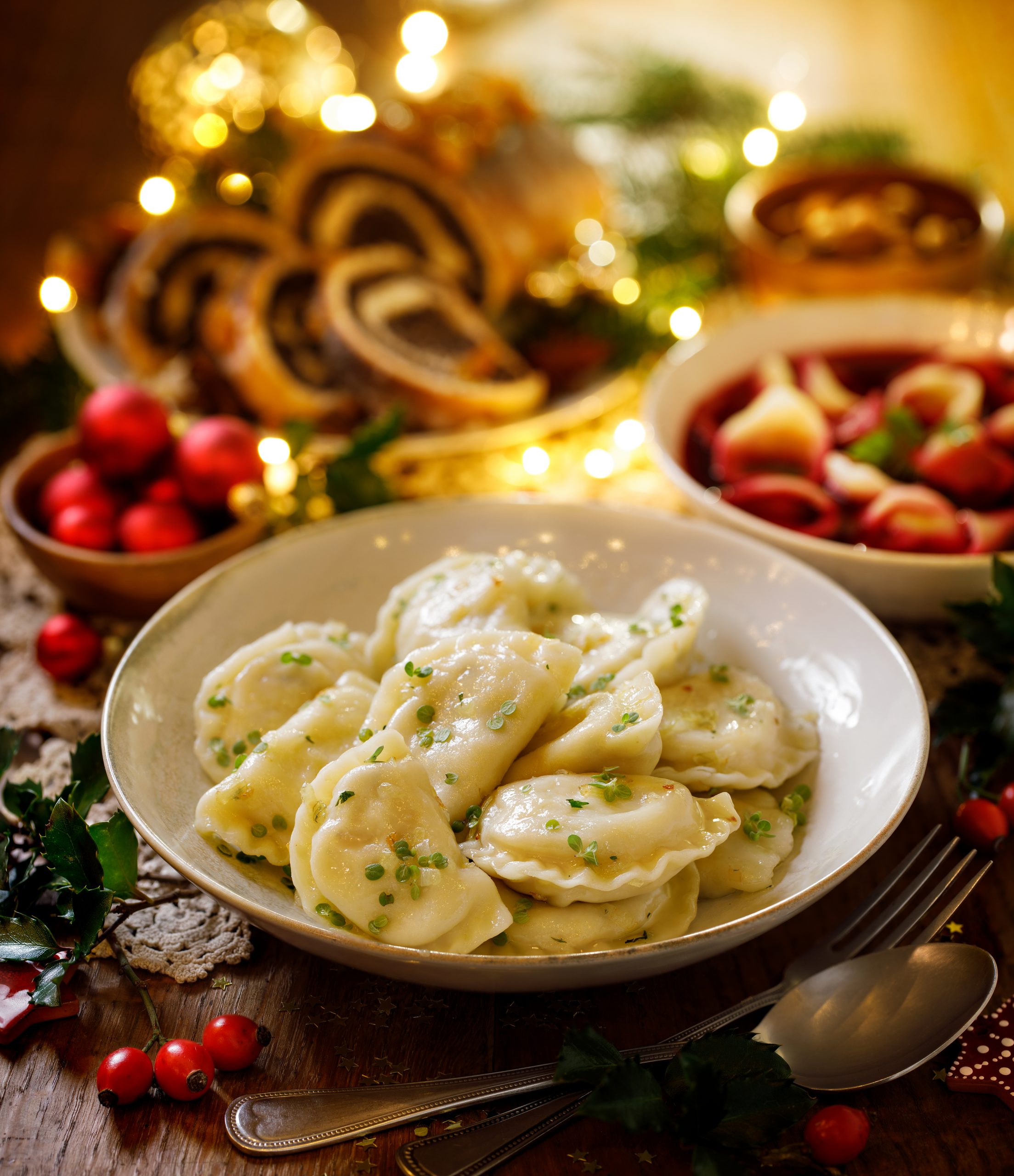

 1.Tracing Family History pre-WW2
1.Tracing Family History pre-WW2 2. Tracing Family History WW2
2. Tracing Family History WW2